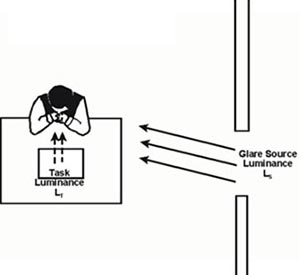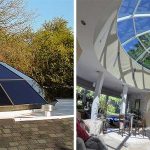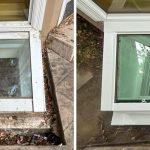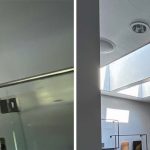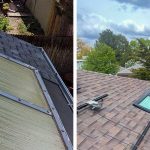Glare is all about contrast and is caused by unequal light distribution.
Types of glare.

Disability glare, such as when the eye is confronted by headlights from oncoming automobiles, can result in a nearly complete lack of vision.
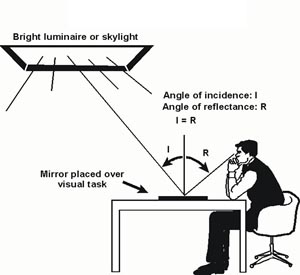
Veiling reflection is visual discomfort resulting from bright reflections off shiny surfaces, such as a bright light reflecting on a computer screen or a countertop.
Skylights can reduce glare by providing more equal light distribution.
With the sun as the light source, everything depends on orientation—your house, the room, the windows, skylight number and placement—and the path of the sun.
In general, daylight from windows tends to be horizontal and from one direction. The windows are “aimed” at a portion of the available daylight and eaves, fences, buildings, etc. can block large portions of the remainder. In contrast, light from a skylight may come from a majority of the sky.
By placing skylights above large windows or patio doors, light distribution is much more equal—thereby reducing glare throughout the room.
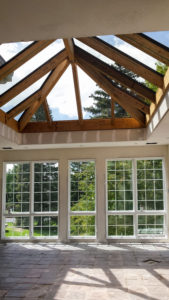
How to reduce glare from skylights
Diffuse the light.
Currently, most acrylic and polycarbonate glazings use pigments in their “white” products to diffuse light. This also reduces the amount of visible light transmitted. There are clear plastic products formed with a “prismatic” surface that are both highly diffusing and have very high light transmittance.. These are similar to the prismatic lenses used on light fixtures.
Velux LuxGuard polycarbonate dome skylights offer both white or clear and prismatic or smooth options.
Skylight number and placement.
When skylights are provided to light a large room, careful attention to number and spacing is important. Large, widely spaced skylights may produce bright conditions under the skylights and relatively dark conditions in between. This results in uneven light distribution and possible glare problems. Small, closely spaced skylights, on the other hand, will provide more uniform lighting conditions, but will be more costly to install.
Blinds are the best way to control light.
While having fresh air and daylight is a good thing, glare in your TV room and home office or a nap with the sun shining in your face is not.
Light filtering blinds can be used to diffuse the light and reduce glare or blackout blinds can be used to block all the light from the skylight. The advantage to blinds is your ability to adjust the light with changing conditions, such as direct sunlight creates disability glare when you’re sitting in your breakfast nook on winter mornings. Or you want to take that nap!

